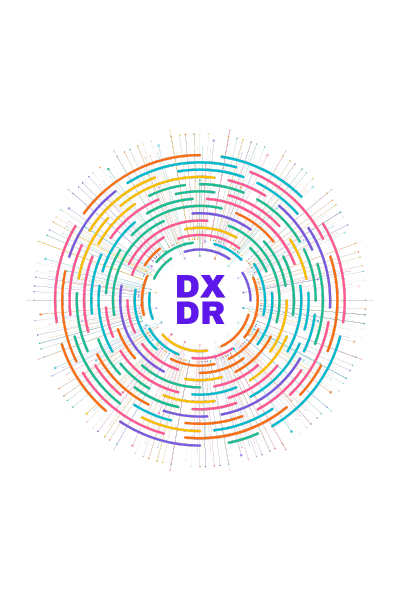The Role of Trust in Organizational Relationships

Trust is an important issue in any relationship.
“Trust” is an important issue for organizations of all sizes, and open organization advocates often espouse openness’ power to generate high-trust organizational contexts and enhance trustful relationships between organizational members.
Recent years have demonstrated a strong need for safety and high-trust environments in the workplace. As LDR21 continues to consult with organizations and construct its Open Index, it is realizing that organizational leaders are keen to address this issue of trust in their organizations.
“From discussions and studies thus far, LDR21 does believe that trust is the foundation from which all open values and behaviors operate. I do think that our core focus for research and discussion should be around safety, positive intent and ownership.”, states Jen Kelchner.
Discovering the relationship of trust and openness
LDR21 began to look at how we could assess the openness of an individual, team, and organization related to the core values of openness. We began this work in early 2017 and by early summer that same year, we began to work directly with Dr. Mary Jo Burchard, an academic practitioner of organizational leadership. As the months passed, The Open Index and accompanying Agility Suite began to come to life.
However, Dr. Burchard became very aware that there was a key (and missing) component to the conversation. The relationship of trust. Dr. Burchard’s research began to examine trust in two primary modalities:
Perceived behaviors that imply trustworthiness
Perceived intent that implies trustworthiness
It is based on perception of course but will shed light on the actions and behaviors that lead to specific types of interactions. These interactions, over time, create environments and cultures that either foster or inhibit people’s capacity to trust.
Below are the dimensions into which our research categorizes these perceptions:
Authenticity
Safety
Consistency
Dependability
Competence
Ownership
Positive Intent
Dr. MaryJo Burchard, lead researcher and developer of The Trust Index, explains: “In addition to conducting grounded research based on immersive phenomenological observations and focused interviews, one of the best ways to explore the nature of the relationship between trust and the various dimensions of Open within organizations is to measure all the variables and run correlation and multiple regression analysis. That process, once we are able to do it, can produce distribution-based scientific evidence to inform how they are related and the extent to which any of them may be influencing the others.” For more on Dr. Burchard’s research in Trust and change readiness, contact her via LinkedIn.
Don’t you trust me?
An answer that is as accurate as it is sensitive has evaded people, especially in the workplace.
How can we say, for example:
“I trust that you mean well, but I do not yet trust your competence.”
“I trust your expertise and I know you intend to do everything you say, but I find that your optimism about what can be done in an hour exceeds reality, so despite your good heart, I cannot trust your dependability.”
We often find these answers difficult to share, and even more difficult to accept: Shouldn’t we be able to say we simply trust someone or we do not?
According to the research, it just isn’t that simple.
Trust requires a willingness to be vulnerable to another person and believing that the other person will not harm you in that vulnerable state.
Brene’ Brown describes the basic way that trust is built: in very small moments, like collecting marbles in a jar, over a period of time. In this video, Brene’ quotes Charles Feltman, who wrote The Thin Book of Trust. Feltman described trust as: “choosing to risk making something you value vulnerable to another person’s actions,” and distrust as deciding that “what is important to you is not safe with this person in this situation.”
As it happens, we can be vulnerable in many different ways—so trust, too, can be measured in each dimension that it is both extended and received. When we trust, we are making both a cognitive and emotional judgment call about another person, and the degree of risk we are willing to gamble that they are worthy of our confidence – at least in that specific area. In his book, Feltman developed Four Distinctions of Trust: Sincerity, Reliability, Competence, and Care.
Taking a closer look
We can break these distinct areas of trust down even further. We can observe our level of willingness to extend vulnerability to those we deem worthy of caring for it—at least seven different “marble jars” in which we are collecting reasons to trust others. The following are the dimensions that LDR21 and Dr. Burchard discovered in their work:
Perceived AUTHENTICITY.
When we perceive that someone is authentic, we believe that what we see and hear from them is who they truly are. An authentic person’s words and actions appear to be real. Here is a link from Bill George at Harvard Business School about what authenticity looks like on leaders, and how that impacts trust.
Perceived SAFETY.
When people seem safe, typically the way they communicate also helps others feel more confident and less intimidated about themselves or their situation. We sense that they care and hold our vulnerability with great sensitivity. The things they say and do reduce others’ tendency to feel defensive. Here is a TED talk by Adam Grant on “The Power of Powerless Communication,” which demonstrates how threat-reducing behaviors enable people to feel safe and then are more willing to trust.
Additionally, this HBS article demonstrates how effectively and empathically listening can reduce threat and build trust within the work environment.
Perceived CONSISTENCY.
When someone is consistent, others can base their engagement upon the predictable responses of the consistent person. Even if a behavior is less than ideal, those around the consistent person can adjust their own strategies based on the way they know the person will behave. They can trust the way they know the person will respond, and plan accordingly. In unpredictable or unstable situations, it is still easy to determine whether or not a response “sounds like something [the person] would do.” Here is an article that demonstrates the impact upon the people within an organization when perceived consistency is not present.
Perceived DEPENDABILITY.
Someone we perceive to be dependable is specifically consistent in follow-through. We know we can rely on them. There is integrity between their intent, their words, and their actions. This is someone who will only commit to participating in something if they know they can do it. If you have a dependable person’s word, you can count on their action.
Perceived COMPETENCE.
This is the sense that someone has the skill and expertise they need, to do what is expected. This includes competence in the tasks, in the organizational culture (social cues, behavior norms, values, etc.), and overall aptitude and skill to do what is needed. This HBS article from Michael Pirson and Deepak Malhotra discusses that it is not just competence – but the right kind(s) of competence for the needs of the people whose trust we need – that matters.
And here is a study that explored how a lack of cultural competence led to both lower levels of emotionally based trust, but also the lower frequency of creative new ideas being exchanged on intercultural teams.
Perceived OWNERSHIP.
This form of trust springs from sensing that someone will take personal responsibility for the success or failure of task/project/team, and they’ll make sure they stay accountable (and hold others accountable) to the standards they set. When we perceive someone has ownership, we can let it go and rest knowing they have the helm.
Assumption of POSITIVE INTENT.
This is a predisposition on our part to believe that the other person is saying and doing things without malicious intent. The assumption is understood that we are working toward a common goal. Essentially, we are assuming or perceiving that they care – about us, others, and the situation. This impacts the way we interpret both communication and behaviors, as well as the way we respond. Harvard Business School’s Faaiza Rashid and Amy C. Edmunson discuss the need for various expressions of consistency, dependability, competency, ownership, and assumption of positive intent when engaging in what they call “risky trust” – trust extended with high stakes and high risk in multiple dimensions.
Food for thought
As Open Leaders continue to have the conversation about how trust interacts with the five principles of Open, here are questions that spark the conversation and further the research.
Is “Trust” another open organization principle? Situating trust this way would mean treating it as something of an “input,” something people can infuse into their organizations to realize greater and better openness?
Can “Trust” be “operationalized” like the other principles?
Is “Trust” more of an “output,” something that occurs when people concertedly practice open principles in the organization (something that results from the application of open principles, in other words ). It would, therefore, be on par with concepts like agility, innovation, and engagement—concepts already identified by the Open Organization community.
What role does openness plays in fostering high-trust contexts?
Is “Trust” something that “sits” or operates at an altogether different level of abstraction (neither “input” nor “output”).
Is “Trust” something more foundational, something that facilitates the current five open organization principles?
What roles does “Trust” play in open organization?
As leaders in the 21st Century, we have a massive responsibility as our paradigms shift. One of those is leading to the new global age from a heart-centered approach. For us at LDR21, both open values and trust are foundational to all relationships.








Responses